In the world of home disasters, a water leak can masquerade as a benign trickle before rapidly spiraling into a devastating flood of damage. Yet, many remain oblivious to just how common these water crises are.
Water damage restoration services have never been more crucial as unanticipated weather changes and aging infrastructure make such incidents disturbingly frequent.
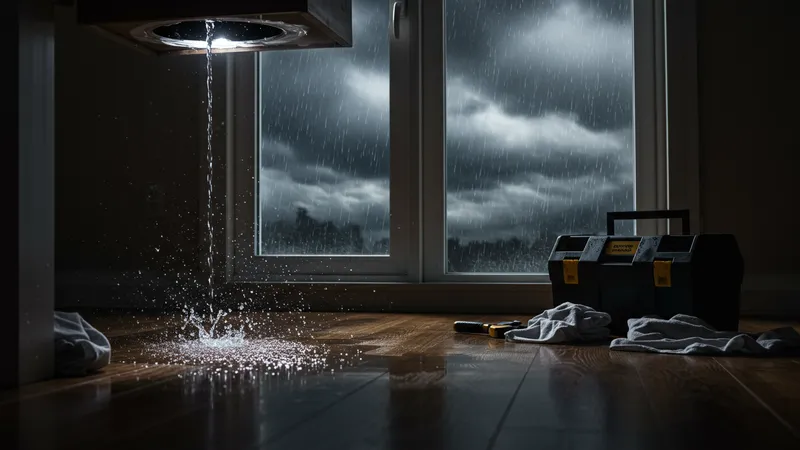
Most assume that water damage is merely a superficial concern, dealt with by a mop and a bucket. However, studies reveal that untreated water damage can lead to black mold epidemics, which pose severe health risks. Shockingly, the structural integrity of your home could be compromised within hours. But that’s not even the wildest part…
Believe it or not, many insurers are quick to deny claims over trivial oversight errors—leaving homeowners in dire straits. If you think this sounds bad, the hidden exclusions in these policies are often far worse, leaving families without a penny. Yet, there’s more to uncover about this tangled web of risks and red tape…
What happens next shocked even the experts: the advanced technology driving these restoration services might just reveal a deeper, potentially life-threatening issue lurking within the walls. What gets uncovered next is even more critical to know…
Underneath the surface of what appears to be just soggy carpets or damp walls lies a beast much greater. One of the most feared hidden dangers is mold growth, which can begin as little as 24 to 48 hours after water intrusion. Mold isn’t just an aesthetic nightmare; long-term exposure can lead to respiratory problems and severe health issues. But there’s one more twist: mold can remain hidden for months or even years, causing damage before you even realize it’s there.
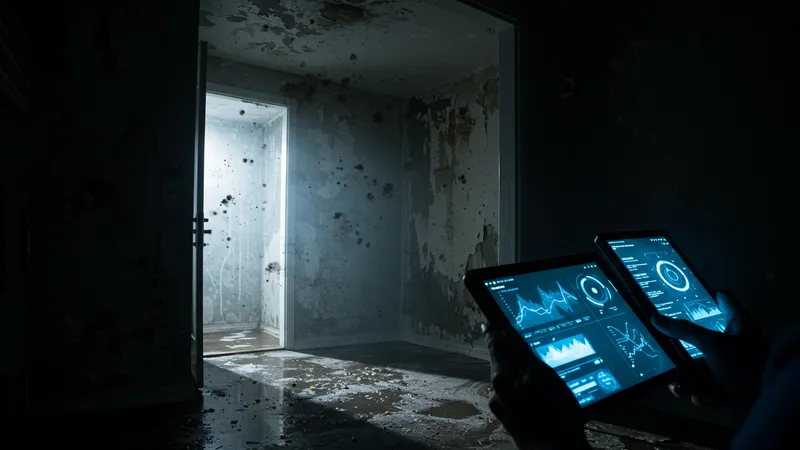
Surprisingly, structural damage is another overlooked byproduct of water disasters. The weakening of walls, ceilings, and floors can compromise the safety of a home. The scary part? This kind of damage is often silent and unseen, only becoming apparent when it's too late. Armed with modern tech, some companies can now peer into walls without invasive techniques, but what they find may change everything you thought about “safe” living environments.
Water damage can also create electrical hazards that go unchecked. When water seeps into wiring systems, it doesn’t just pose a risk of failure but can lead to electric shocks and fires. The telling statistic: over 20% of household fires stem from water-exposed electrical systems. The shocking detail? Not all restoration services include comprehensive electrical checkups as part of their standard package.
Finally, let’s discuss the environmental implications. Many believe using harsh chemicals is the only way to stop mold and bacteria after water damage. However, rising awareness is driving change towards eco-friendly solutions that are as effective as traditional methods. This revelation isn’t just important for the planet—it could transform industry standards. But what you read next might change how you see this forever…
Not all is as it seems with insurance policies covering water damage. The industry is filled with terms like “sudden and accidental” that can leave homeowners scratching their heads. If the damage is considered “gradual,” you may find your claims denied. Some companies even have clauses that exclude certain types of water damage altogether. But why is this the case? It turns out, industry jargon is intentionally complex to reduce the liabilities of the insurers.
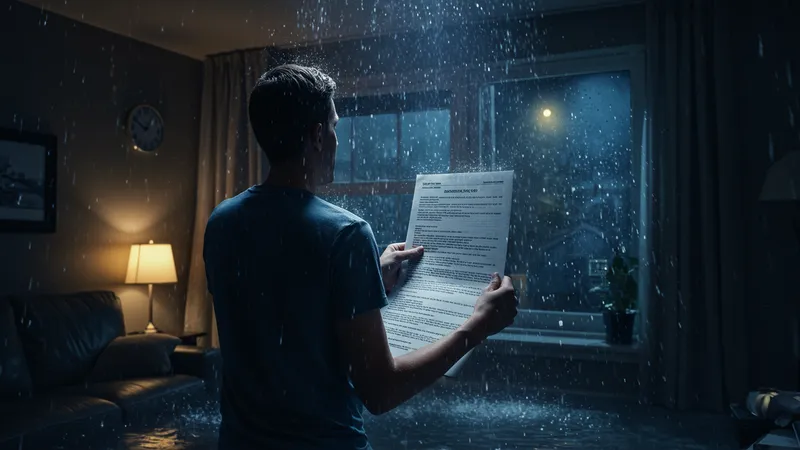
Even more alarming, many homeowners never realize the specifics of their coverage until disaster looms. A staggering 62% of policyholders are unaware of the exclusions in their plans, according to recent surveys. But what's even more concerning is how easily some companies deny coverage on technicalities, sidestepping responsibility when you need them the most.
There are instances where policyholders have been denied claims because of simple oversights, like forgetting routine maintenance that supposedly would have prevented the damage. The fine print can bind homeowners to conditions many wouldn’t even think to adhere to, like annual roof inspections. Knowing these traps beforehand can save thousands, but it begs the question, why aren’t policyholders better informed?
Yet, a growing trend is reshaping the landscape. Some pioneering insurers are now simplifying policies and offering real transparency, creating policies with true protection minus the confusing legacies of outdated models. These moves are changing the game, making it more crucial than ever to review your coverage. But dig deeper, and you’ll see there’s even more startling information to uncover…
In this digital age, technology is reshaping how we tackle home crises—and water damage is no exception. Advanced moisture meters and infrared detectors now allow professionals to assess the extent of water damage without tearing down walls, giving unprecedented accuracy. These devices can find wet spots invisible to the naked eye, reducing the time and cost of repairs drastically. But hold on—there’s even more innovation on the horizon that could redefine recovery efficiency.
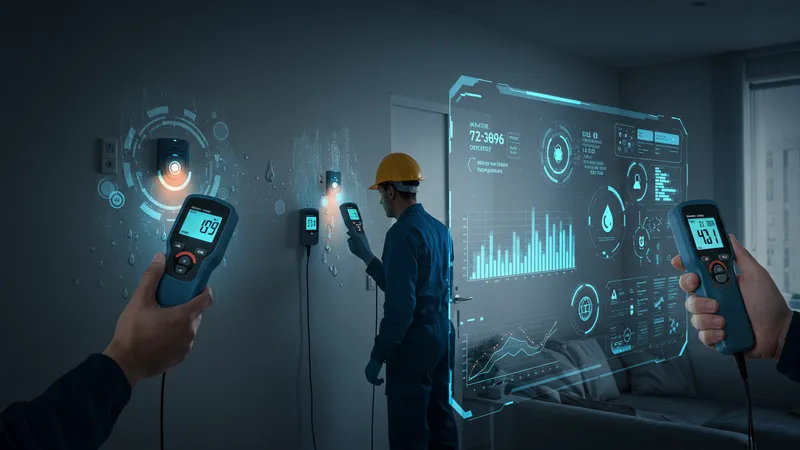
Artificial Intelligence (AI) is also stepping into the arena, with intelligent algorithms predicting the progression of certain damage scenarios and suggesting preventive actions. AI systems can scale these recommendations based on variables unique to each case. Imagine a future where your home’s AI system alerts you of risks before they translate into damage.
Similarly, Drones are revolutionizing assessments by providing aerial views of difficult-to-reach areas, especially after catastrophic floods. These eyes in the sky can safely photograph locations that would otherwise pose risks to human inspectors. More than a gadget, they are quickly becoming a standard tool, expected to increase assessment accuracy by significant margins.
The amalgamation of Virtual Reality (VR) is allowing teams to simulate various restoration scenarios, preparing them for efficient action even in chaotic situations. These simulations aid as part of the training processes, ensuring readiness for real-life challenges, and enhancing emergency response protocols. The implications? Simply transformative and possibly industry altering. The next part of this feature will have you pondering future possibilities…
Imagine being caught in a water damage scenario with no immediate help in sight. Knowing basic skills can make a significant difference. For starters, it is important to know how to shut off your water supply to limit additional damage. Information about the location of the main water valve can save substantial dollars in potential disaster prevention.
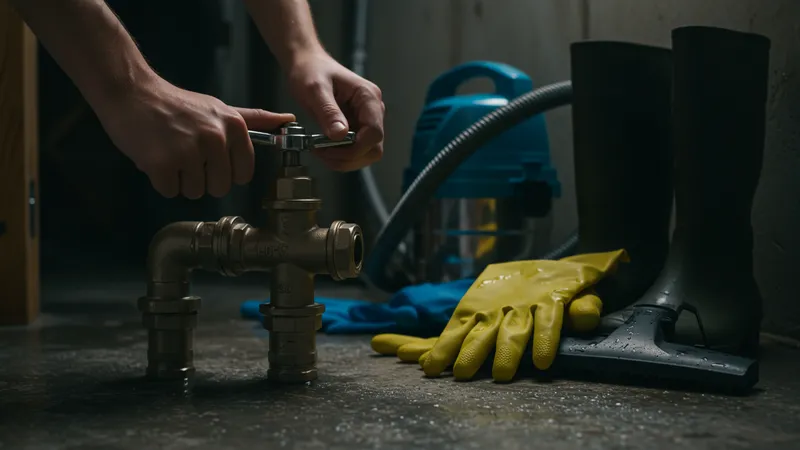
Possessing practical knowledge about simple home repairs can prove invaluable. For example, utilizing wet vacuum cleaners can efficiently manage initial water removal, preventing deeper issues. Paired with rubber gloves and boots, these tools help mitigate immediate dangers until professional help arrives.
Another crucial skill is to know how to identify signs of mold early on. Learn to spot discoloration, musty odors, or even allergy symptoms that may indicate the insidious spread of mold. This knowledge not only protects your health but also enables early intervention, dramatically reducing remediation costs.
Homeowners can benefit immensely from keeping basic maintenance records. These records are often required during insurance claims and can hasten the approval process. Knowing how to document preemptive care (like gutter cleaning and regular inspections) provides substantial leverage when dealing with claims adjusters. Prepare to discover the next vital skill that could be a game-changer in the restoration journey…
While instinct may push some homeowners to tackle water damage on their own, not every DIY method is advisable. An unfortunately common mistake involves using household fans to dry out water, which might seem logical but often leads to spreading mold spores. Acting without professional-grade equipment can sometimes amplify issues rather than resolve them.
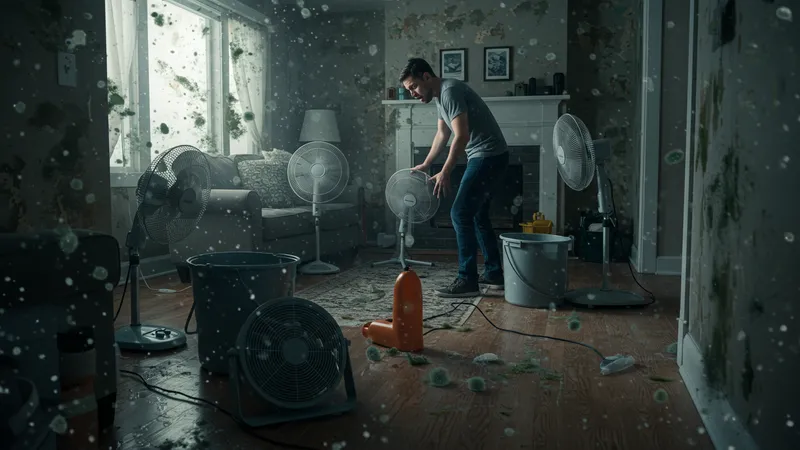
Another frequent error involves underestimating the water’s reach. Water can seep beneath floors and behind walls, unseen to the casual observer. Assumptions that the damage is superficial often lead to worsened conditions. Some choose to ignore small leaks without realizing they could be an underlying symptom of a severe plumbing issue.
Moreover, handling electrical equipment without expertise is another potential pitfall, risking not only property but personal safety. Incorrect treatments can lead to severe consequences, from ruined equipment to injury. The danger amplifies when unaware homeowners attempt to fix submerged appliances.
To sidestep these missteps, knowing when to call a professional is crucial. Restoration services are trained to deal with any situation effectively. But as much as these points warn, the next discussion will introduce innovations changing the perception of restoration altogether…
The future is undeniably green, and the water damage restoration field is keeping pace with eco-friendly solutions. Many companies are transitioning away from harsh chemicals, instead opting for safe, biodegradable products that maintain environmental integrity without compromising on efficiency. This shift not only protects the earth but enhances indoor air quality post-restoration.
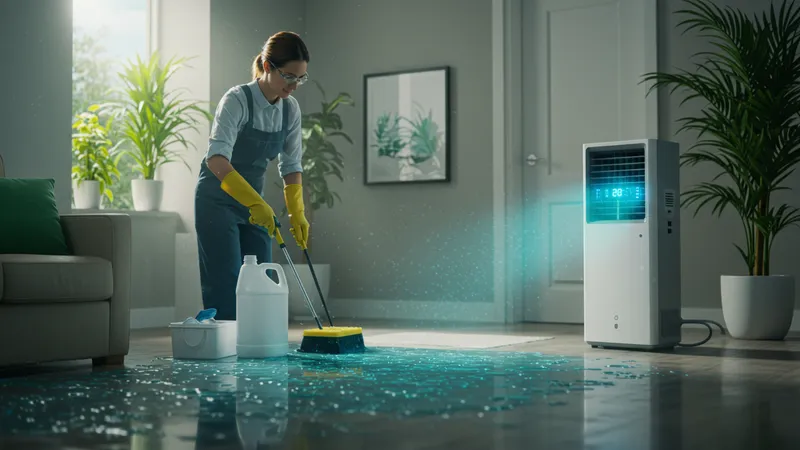
For instance, enzyme-based cleaners are carving a niche, degrading contaminants naturally without toxic residues. These biological solutions offer an effective counter to traditional chemical treatment’s harsh nature while being kinder to the planet. Meanwhile, sophisticated air purification systems are achieving results warehouse restorations can trust.
Recycling is taking center stage with materials being repurposed from affected areas, thus reducing waste produced during restorations. Innovative projects are seeing building materials like wood and drywall being renovated rather than discarded, equipping the sector with sustainable options.
As this spectrum of green alternatives stretches wider, homeowners are emboldened with choices that weren't deemed viable in previous years. The confluence of technology and eco-consciousness is driving unprecedented changes. Continue exploring to unearth another aspect reshaping restoration dynamics…
With the potential for damage to quickly escalate, financial preparedness becomes paramount. Thankfully, more homeowners are now using financial cushion strategies such as emergency savings specifically earmarked for unexpected home repairs. This dedicated reserve can offer peace of mind when the unexpected strikes.

Additionally, understanding the extent of your insurance coverage is crucial. A comprehensive review of your policy with a professional can identify any gaps or misunderstandings before they become issues in the wake of a disaster. Expanding your policy to include additional coverage types can also fortify your financial defenses.
For those looking to ease immediate costs, many restoration companies offer financing plans allowing for manageable payment structures over time. Choosing a plan carefully based on your financial capacity can reduce strain and provide immediate access to necessary services.
In recent times, some insurers have even begun offering incentive programs encouraging proactive home maintenance, which can ultimately lead to premium discounts. These programs are mutually beneficial, promoting home upkeep while reducing the likelihood of claims. Explore the forthcoming revelation—the brink of a financially savvy restoration process you hadn’t considered...
Once seen as a minor inconvenience, water damage is now gaining recognition as a serious home hazard. Media reports and social media platforms spotlight its repercussions, urging homeowners to take preemptive actions. This shift in awareness has led to increased demand for expert services to tackle issues at the first sign of trouble.
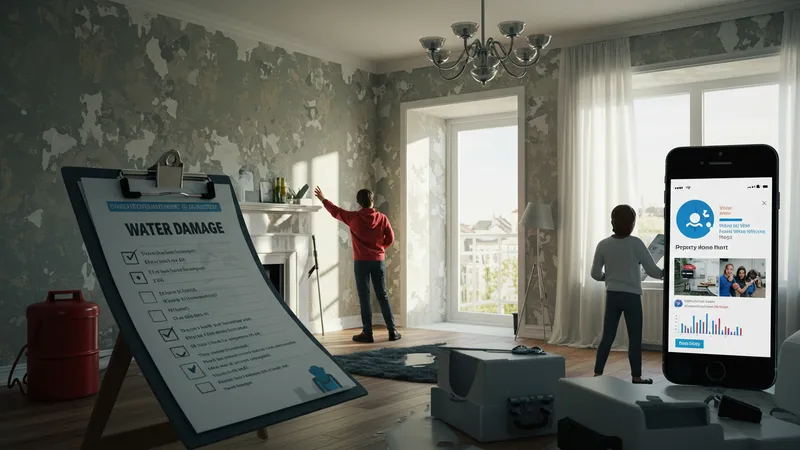
Interestingly, real estate trends also illustrate a change in perspective, as buyers now closely scrutinize a home’s water damage history before making decisions. Properties that exhibit a proven track record of proper maintenance continue to hold higher market value. This new checklist item emphasizes the importance of disclosure and transparency.
Even cultural narratives are adjusting, with more focus on characters experiencing home-related calamity. This rise in representation highlights the emotional struggle water damage can impose on families, building empathy and understanding society-wide that this is more than a structural challenge—it's a personal one.
Public educational campaigns are cropping up with increasing frequency, aiming to better equip citizens with knowledge and resources. As the psychological and financial awareness grows, explore in the next section how restoration companies are stepping up to meet these evolving societal needs…
The last decade has pushed restoration companies beyond their traditional roles, to multifunctional service providers versed in counseling, advisory, and comprehensive home assessments. Bridging anticipations of home safety with practical problem-solving, they’ve innovated service offerings beyond basic water damage solutions.
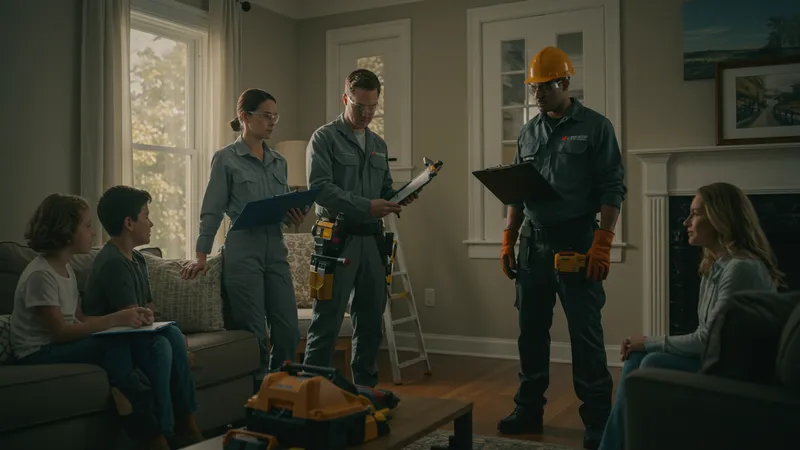
Following disasters, mental health support integration through professional partnerships is emerging as an innovative addition. This approach addresses the emotional impact on families dealing with significant home repairs and loss, acknowledging the holistic approach to recovery.
Additionally, tech-driven home assessments are gaining popularity, forecasting potential hazards using predictive modeling. These advanced services provide a roadmap for fortifying homes against future damage, a smart investment waving modern forward-thinking through the industry.
Companies are also fostering community ties, hosting workshops and training sessions empowering homeowners with critical readiness skills. This approach creates informed end-users equipped to face lesser-known water damage challenges and emphasize the community strength dimension in restoration. In the scene that follows, we’ll delve into how these developments retain unlimited possibilities…
Every sector is ripe for technological transformation, and water damage restoration is no exception. The prevalence of smart home technology will heavily influence the industry, integrating sensors that can instantly detect leaks and send updates to your phone, allowing for immediate action.
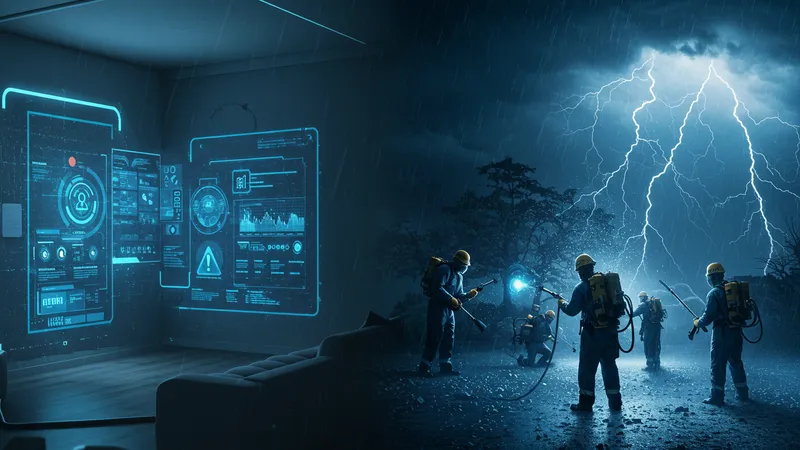
Furthermore, as climate change continues to impact weather patterns, the need for restoration teams specializing in severe conditions becomes apparent. This evolution calls for a refinement in skills and tools, potentially leading to a specialization within the industry focused on rapid-response scenarios.
Regulatory changes driven by evolving safety standards and public demands for accountability may also loom on the horizon. This shift will likely drive restoration firms to adopt evidence-based practices and ensure compliance, propelling the sector into a more standardized future.
The convergence of all these factors underscores an overarching trend towards smarter, more efficient, and environmentally conscious practices. Amidst these rapid advancements, grasp the broader implications for the industry’s trajectory as the possibility for groundbreaking transformation unravels…
Educational workshops centered around water damage prevention and action plans are growing in popularity. Companies and local governments are partnering to equip citizens with actionable skills, from recognizing early signs to implementing effective emergency responses.
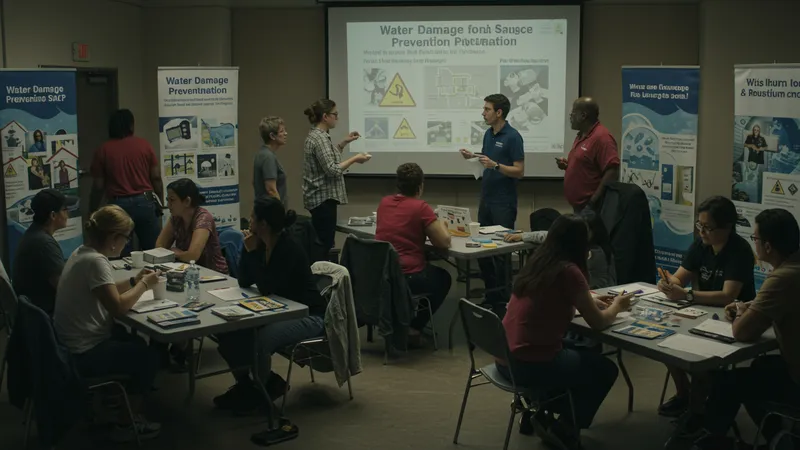
There’s a noteworthy social dynamic in these workshops, fostering a community spirit aimed at reducing panic during a crisis. They offer an interactive experience where fears are addressed, and neighbors bond over actionable insights. Sharing such moments builds collective resilience—a highly valuable community trait.
One additional outcome of these initiatives is the creation of a network of informed citizens ready to apply newly learned skills in real-life scenarios—turning them into first responders within their own homes. Hands-on learning techniques are profoundly reshaping how people view their role in disaster readiness.
As these programs expand, they challenge traditional perceptions of self-reliance; the emphasis is shifting towards collective wisdom and preparedness. Continue to wonder what underlining impact this educational revolution could have on broader disaster management practices...
It’s an aspect often overlooked in the aftermath of water damage—a lingering impact on emotional well-being. Feelings of loss, frustration, and anxiety arise as people witness long-awaited changes to what they call home. This emotional rollercoaster necessitates compassion, often found lacking in standard disaster response protocols.
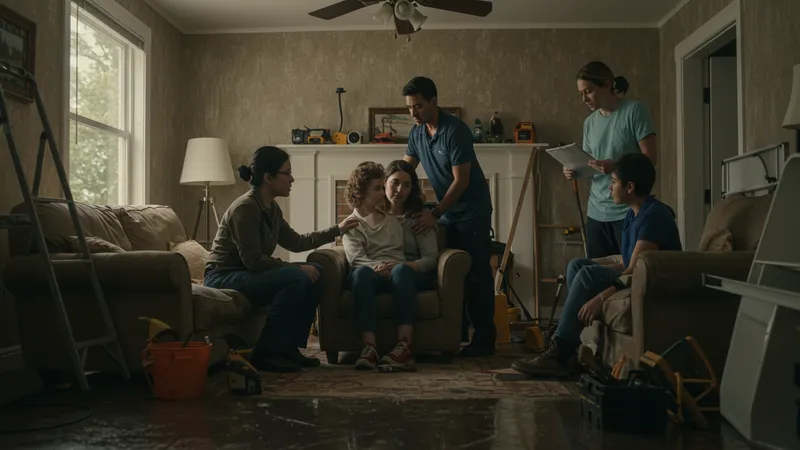
Restoration companies now acknowledge this gap, introducing crisis intervention teams into their array of services. These professionals guide families through more than just the physical reconstruction of their homes but the rebuilding of their peace of mind.
Integrating psychological support into the restoration process not only aids immediate relief but additionally improves customer satisfaction. It has become evident that those navigating emotional challenges simultaneously with structural repairs experience a smoother recovery journey.
This emerging industry approach is setting a new precedent and sparking conversations on adding emotional recovery to emergency protocols. As more companies adopt these insights, the sector continues to evolve—positioning them not as mere fixers of structural damage but holistic supporters in times of trials…
In today's fast-paced market, restoration companies are refining their marketing strategies to sync with discerning consumers keen on transparency and authenticity. There is a shift from traditional advertising to relationship-driven outreach, enhancing trust and customer loyalty.
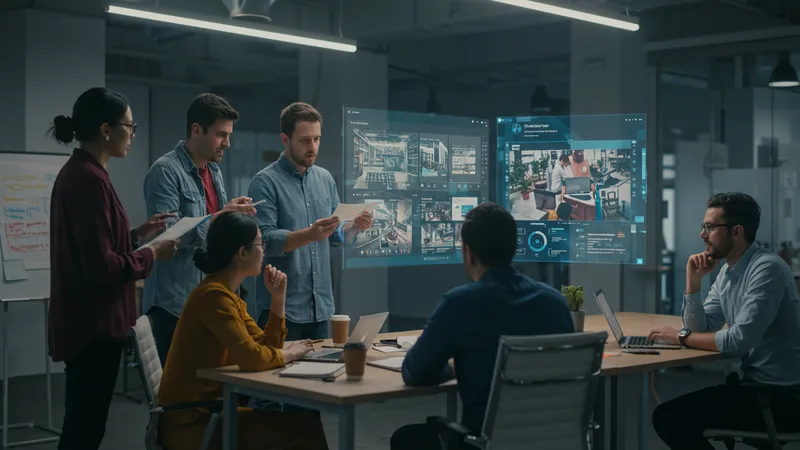
Interactive digital content, such as virtual tours and case studies, is surging. These resources not only inform but also showcase the company’s methodology and success stories, transforming potential clients from uncertain inquirers to engaged, trusting customers.
Additionally, social media presence allows firms to cultivate a brand personality, offering glimpses behind the scenes, expert tips, and engaging directly with the public’s queries and concerns. This social approach builds connections that go beyond transactional interactions.
Companies are also emphasizing their eco-friendly practices, responding directly to a climate-conscious clientele. By publicizing sustainable certifications and practices, they align with broader environmental values, meeting customer expectations for both service and social responsibility—and stirring curiosity to explore further into industry innovations lying ahead…
Water damage restoration is no longer a niche irrelevant before-the-fact; it has become a proactive and integral part of modern homeownership. With advancements in technology, evolving consumer expectations, and a deeper understanding of emotional impacts, the industry is at the cusp of significant change.
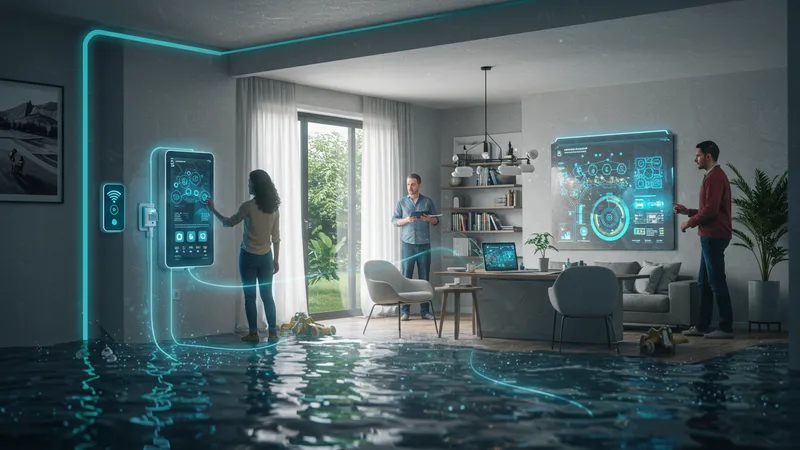
The marriage of smart solutions and compassionate service is setting the stage for an evolved sector, ready to deliver not just quick fixes but comprehensive support that honors the multifaceted nature of human experiences during crisis recovery. The onus is on homeowners and industry players alike to stay informed, adaptable, and proactive.
As we step into this new era, embrace the lessons learned, and prepare to evolve further. Share this knowledge, engage in industry conversations, and consider how these insights might impact you—or someone close to you—in future scenarios. The narrative isn't just about restoration. It is about resilience, adaptation, and the constant pursuit of better.